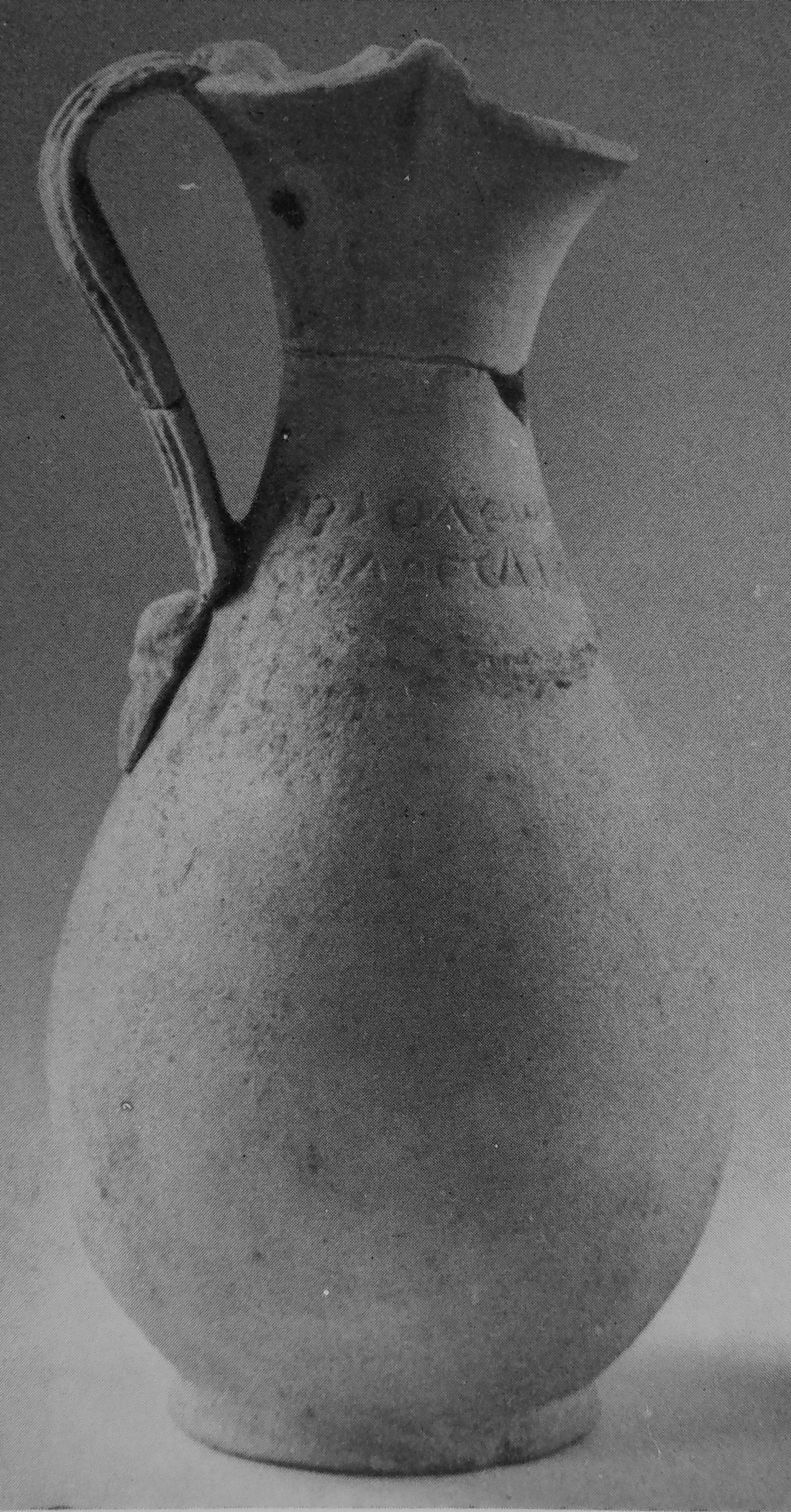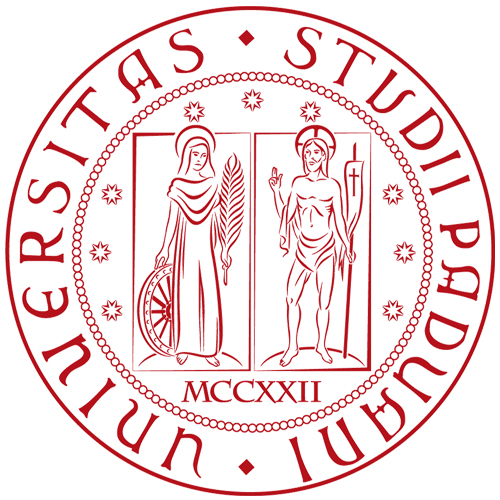The inscription occupies the lower part of the neck, around the level of the handle attachment. It must have been carved before the adding of the garland, which is slightly tied off in order to avoid the end of the name
The dedication was written before firing (Burr Thompson 1973, p. 19). The writing shows many cursive features, as commonly happens on Ptolemaic oenochoae and especially on those for Ptolemy IV: round E, open Ω, Μ with a shorter second hasta and lunar Σ. A is written both with straight crossbar and without the bar at all. The second hasta of Π is curved.
Letter height between 1.4 and 0.7






